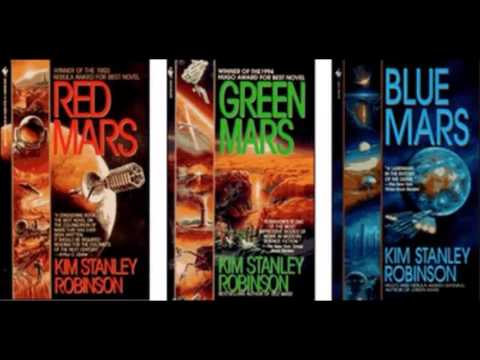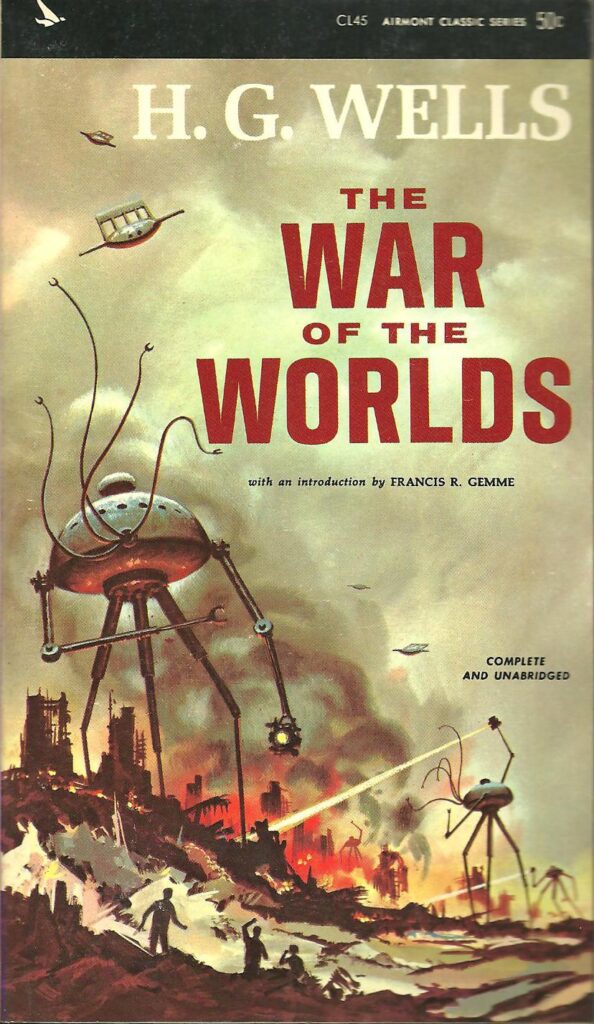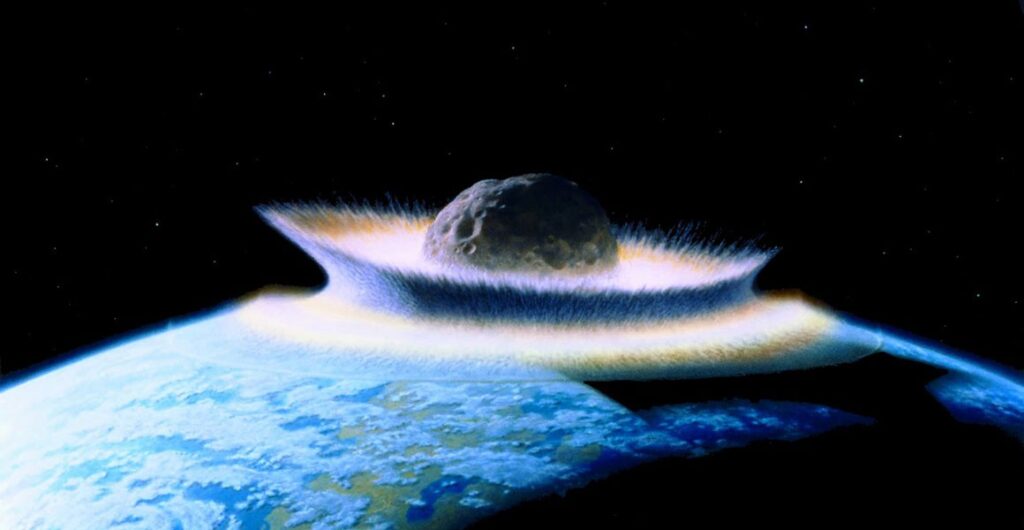Terraforming or terrafomation (“Earth-shaping”) is exciting. A “hypothetical process of deliberately modifying the atmosphere, temperature, surface topography or ecology of a planet, moon, or other body to be similar to the environment of Earth to make it habitable for humans to live on.” 1
The Goldilocks idea refers to the habitable zone (HZ) or, more precisely, the circumstellar habitable zone (CHZ). These terms apply to “the range of orbits around a star within which a planetary surface can support liquid water given sufficient atmospheric pressure.” 2 I have also seen Goldilocks apply to stars, and I imagine other objects could get that designation.
Terraforming refers to Earth-shaping (making it like Earth), and the Goldilocks idea reflects Earth’s position in the solar system that allows liquid water (of course liquid; otherwise, it is steam or ice) with sufficient atmospheric pressure. A ‘Goldilocks planet’ is a planet that falls within the habitable zone, where conditions are just right for life as we know it. This idea also would include our Sun, its characteristics, and, of course, distance.
If a planet is within these parameters, it could work for Earth’s inhabitants, not just humans but all life on Earth. I want to leave the mosquitoes out, and I am sure you would like to leave something behind. However, we need the whole package to work like it does here. How it all works together is the entire idea of ecology. How every species, no matter how annoying, plays a crucial role. “Earth is where we are finely tuned to live: it is not too hot or too cold, but just right the porridge in the story of Goldilocks.” 3
This idea of what we need on a planet does not mean that this is the only way life on Earth can survive; instead, it is a way that produced us and the way we have flourished. If things had been different, we might be in a different environment and with different kinds of life, or perhaps nothing would have existed, including us. The development of Earth and its life is indeed up for debate; no one was there to record what was, adding to the intrigue of our study. We have to start from the premise of what we have right now on Earth, but the potential for different life forms is a fascinating prospect.
Why would we want to terraform? It is a long, untried process that might not work. However, the idea has long captivated scifi writers, scientists and just plain people who dream of the adventure in the stars. The Pilgrims ventured out to America in the 1600s, and that was a long and scary journey.
At first, the Pilgrims wanted religious and social freedoms and a better life, some of which also meant a chance to live. The world was unfriendly to different points of view, maybe more so than it is today. The Pilgrims did it because the goal of the promised land was better than the life they were living. Their journey serves as a historical example of the human drive to explore and seek better living conditions, a drive that is now leading us towards space exploration and terraforming.
In today’s world, considering an interstellar voyage and terraforming is often motivated by long-term survival, economic possibilities, a chance to find a more tolerant place or just a plain adventure. However, is terraforming a Goldilocks planet a good idea for moving in? The potential consequences of terraforming, such as the disruption of existing ecosystems and the ethical implications of altering a planet’s natural state, are important factors to consider.
The primary driving force of leaving Earth is long-term survival. All life does its best to disperse or spread out to find new resources, escape unfavorable conditions, avoid competing with siblings, and avoid breeding with closely related individuals, which could lead to inbreeding depression.4 These reasons also apply to humans, some coming faster than others.
Another compelling reason for venturing into space is our insatiable thirst for knowledge and discovery. Humans’ natural curiosity drives them to seek answers to their challenges or ways to enhance their lives. This inherent quest for learning has been pivotal in our survival and happiness and will undoubtedly continue to shape our future.
Penguins have found a way to survive in a barren land where there is little competition. Indeed, if we did not care and were content to live as we are, all life on Earth would have died long ago. Evolution means that if a trait helps our survival enough, it stays; if it does not help, we go.
Furthermore, another reason would be to discover new resources, which could be a boon, providing a lifeline to Earth and the colonists on our new planet. If we used our knowledge, the new home would not only be like Earth but could also be better. In turn, Earth could also progress. Perhaps humans could mitigate the threats that were the reason we left in the first place, like killer asteroids. The cons of terraforming, though, could happen fast.
Ethical considerations of problems here on Earth could use our resources to solve. Some feel these needs here on Earth need to be solved first. Many humans need help getting food, water, and shelter. Of course, this circles around opportunity if we go into the cosmos to find answers we have yet to find on Earth. America’s journey to the Moon led to many advancements right here on Earth: thermal Blankets, vacuum-sealed food, fireproof firefighter uniforms, artificial limbs, the insulin pump, LASIK, solar cells, water filtration, freeze-dried foods, baby formula, CAT-Scans, air purifier, home insulation, infrared ear thermometers, the portable computer, LEDs, 3D food printing, to solve the problems of getting astronauts to walk on the surface of our Moon. These are just a few examples, but they not only made life easier, they also saved lives. We could invent them here on Earth, but we must face the reality of how the world works. Problems can be solved, but God does not decide for humans; humans do. That is the definition of free will. Humans must find their way on their own, or else what is the relevance of our existence?
Then, there are environmental results that backfire. For instance, on Earth, Australia experiences big problems caused by minor changes. The importation of just a few rabbits resulted in swarms of the cuties. Or Hawaii importing mongooses to control rats, not realizing that mongooses are awake during the day and rats at night. That result was a disaster. The mongoose went after native species instead and in quite an effective manner.
This issue of environmental change is significant, as our understanding is largely theoretical. We have only a few concrete examples, like the ones I cited, but they were localized on an island. The rest of our knowledge on how a change affects a whole planet is based on theory. We must grapple with the uncertainty of our actions and the potential consequences before we can do something as fundamental as manipulating the weather.
In addition to the potential dangers of terraforming, we must also consider the ethical dilemma of encountering life on our new planet. The odds are high, given that we are searching for a planet that could support life. What should we do if we find any form of life? Is it appropriate to wipe that life out, even if it is an amoeba? The Star Trek movie The Wrath of Kahn 1982 had strict rules about this. If there is life, terraformers are not allowed to wipe it out to plant the seed of another type of life.
This rule concerned advanced terraforming, a process that involves changing everything on a planet to be Earth-like. This idea includes altering the planet’s atmosphere, temperature, and geology to make it suitable for human habitation. Humans certainly are not there yet, but it is a consideration in exploring the ethical implications of terraforming.
However, if no sentient species are on the planet, and someone wants to terraform, the Federation allows colonization. The result will blend the planet’s life with the life introduced.
If a sentient species were on the hypothetical planet someone wanted to colonize in the Federation universe, the sentient species planted would likely wipe out the native species, thus violating The Non-interference Directive, which is paramount in the Federation. Our current theories allow for this. “Nothing in the current models of evolution and ecology prevent this, so long as the two (sentient) species were not in total competition for resources – if they were, one would inevitably outcompete the other.” 11
Beyond these issues, we could create environmental disasters even on barren planets, moons, asteroids, or comets. If the objects travel, this disaster could lead to more contamination. Terraforming is an enormous undertaking.
The term terraforming, a concept that has since become a common trope in science fiction, was first introduced by the pioneering work of Jack Williamson. His innovative use of the word in his scifi story, Collision Orbit, published in the 1942 edition of Astounding Science Fiction, was a pivotal moment in the genre. Before Williamson, writers described terraforming but did not label it. His contribution added a new layer of depth and authenticity to the genre, sparking imagination among science fiction enthusiasts.
There are many science fiction stories depicting terraforming. Martian invaders in the 1989 novel War of the Worlds 1898, by HG Wells, embark on the transformation of Earth for their long-term habitation. Robert Heinlein spins a tale of an agricultural settlement established on Jupiter’s moon, Ganymede, in his 1950 novel Farmer in the Sky. However, the Mars Trilogy- Red Mars, Green Mars, Blue Mars 1992-1996 by Kim Stanley Robinson- does the best job of describing changing Mars to a blue planet like Earth.

If we did this, where would we go? Mars is close, and many have hypothesized what we could do with it. However, as it is, it is a mess.
According to our evidence, Mars was once warm, wet, and almost inviting. However, it is now dry and barren. The water is still there but frozen in and below the surface soil. The temperature is too cold for us. It can go below minus 140C (minus 220F at night in winter).
Mars does have a magnetic field emanating from its crust, but that field is not strong enough to provide the protection we need. We do not know what is in Mars’s interior or how to revive the field, but NASA and Elon Musk plan to colonize the planet, and other countries think the same.
As of “August 24, 2024, more than three decades after the first confirmation of planets beyond our solar system, scientists announced the discovery of six new exoplanets, stretching the number to 5,502.” 8 The sheer magnitude of this discovery is a testament to the need of humans and the speed of technological advancement!
We now know there are many planets outside our solar system. As we identify more details of these planets, we discover that some hold great promise in the Goldilocks determination. The fact that we know they are there is a great motivator.
In addition to the challenges of finding a planet to terraform, we must grapple with the complexities of space travel. We need to figure out how to travel in space, how to protect ourselves from the radiation outside our lovely little planet, and how to achieve the necessary speed for practical exploration and colonization. The enormity of this challenge is not to be underestimated.
No big deal, right?
It is a big deal, very complicated, and very expensive to discover, but as we have seen, once the discoveries are made, we can grind them down to the size of a cell phone (which is now limited to the size of our hands, not the components).
We have to go out into the cosmos, or the human race (and all our living companions on Earth) will eventually go extinct. This could be sooner than later because not only Earthen issues but also outside issues could threaten us. Asteroids and hostile aliens could bring trouble, along with many other unfortunate events.
©JM Strasser November 2024 All Rights Reserved
Sources
1. https://en.wikipedia.org/wiki/Terraforming
2. https://en.wikipedia.org/wiki/Habitale_zone
3. https://www.space.org.au/curious/space-time/goldilocks-planet
4. https://en.wikipedia.org/wiki/Biological_dispersal
5. https://entropymag.co/the-pros-and-cons-of terraforming-planets/
6. https://www.universetodya.com/127311/guide-to-terrafroming/
8. https://science.nasa.gov/universe/exoplanets/discovery-alert-with-six-new-worlds-5500-discovery-milestone-passed/
9. https://en.wikipedia.org/wiki/Jack_Williamson
10. https://collider.com/star-trek-original-movies-ranked-letterboxd/
11. https://www.reddit.com/r/askscience/comments/37jfli/is_it_possible_for_two_distinct_intelligent/








